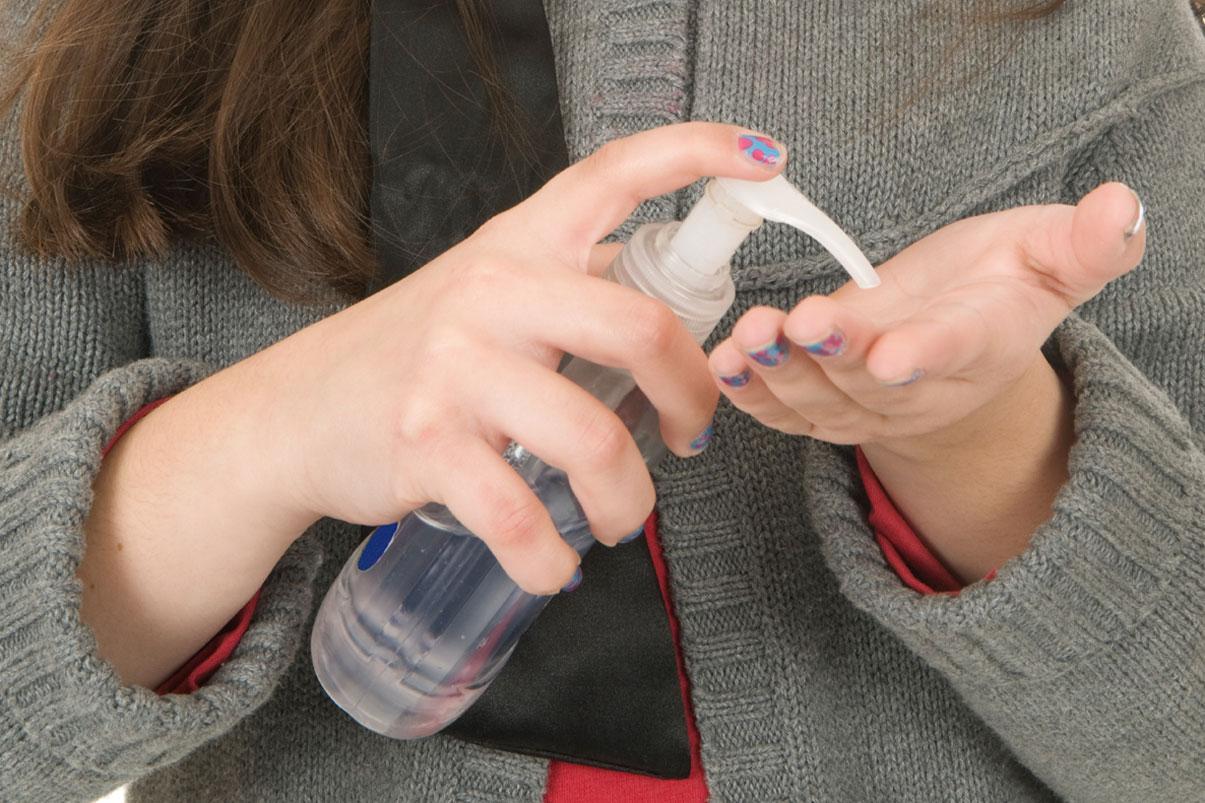Classrooms can be like petri dishes filled with colonies of germs. As a teacher, it is important to understand what can make you sick so you can stay well.
Here's a mini lesson on germs from Lisa Sicilio, a school nurse at College Station High School in College Station, TX, and the health issues chair for the Texas School Nurses Organization: “Germs that can make teachers and their students sick at school are most often viruses that cause respiratory illnesses and are spread by coughing, sneezing or unclean hands. That's because droplets from an infected person get into the air and are inhaled by people nearby or land on objects and transfer to others through contact...with others and inanimate objects such as desks, door knobs, pencils, etc. How long the germ will survive depends on what type of surface the germ droplet falls on. According to the CDC, studies have shown that human influenza viruses generally can survive on surfaces between 2 and 8 hours.”
Whoa. While it's unrealistic to attempt a germ-free learning environment, you can keep the bacteria to a minimum with a few key practices.
“Many illnesses are infectious and can be spread before people are symptomatic with the illness or at least at the very early stages of illness,” explains Michael Steiner, division chief of general pediatrics and adolescent medicine at North Carolina Children's Hospital and the University of North Carolina School of Medicine. “For that reason, the best way to prevent spread of illnesses is for everyone to wash their hands frequently. Alcohol-based hand gels are effective in killing most infectious agents and are the easiest to use. People should especially wash their hands after using the bathroom, after sneezing or coughing, or if they are visibly soiled. And just wash them a few times a day, regardless.”
Teach Healthy Behaviors
Add a little health to your daily lesson plan, especially during cold and flu season. “We need to educate our students and teachers to help stop the spread of germs by following the CDC recommendations,” Sicilio says. In addition to washing hands for at least 20 seconds, the CDC advocates:
- Covering your mouth and nose with a tissue when you cough or sneeze
- Coughing or sneezing into your upper sleeve or elbow, not your hands, if tissues aren't available
- Putting used tissues in the waste basket
- Using an alcohol-based hand rub when soap and water aren't available
- Staying home when sick until you're fever free without using fever-reducing medication
It's also important to remind kids to use their own supplies and not share items like food, hair brushes or combs.
Create Healthy Procedures
Institute standard classroom procedures that teach students proper cleaning techniques and develop their sense of community and accountability.
At Paxton Elementary in Platte City, MO, students help keep the learning environment clean. “We have procedures in place that students engage together,” says Jennifer Day, Paxton's 4th and 5th grade librarian. “In the classroom, there is a designated cleaning time.” In the library, she also enlists students' help to wipe down tables and shelf markers.
Stock the Right Supplies
In addition to notebook paper and writing utensils, include a few cleaning items on your classroom supplies list, Day advises. “I always have antibacterial wipes to wipe germs from tables and anything else that receives a lot of hand contact,” she says. Don't forget doorknobs, chair backs, cubbies or lockers. Soap, tissues, sanitizing gel and adhesive bandages are critical, as are rubber gloves for dealing with especially icky things.
Educators shouldn't stock over-the-counter medications like acetaminophen, ibuprofen and antacid for student use. Instead, work with your school nurse to understand policies around these drugs and communicate those clearly to parents.
Protect Yourself
Finally, don't forget to keep yourself healthy. Day's regimen looks like this:
- Wash hands frequently
- Take vitamins
- Eat healthy and exercise
- Get adequate sleep
- Manage stress levels and resolve conflicts
- Wear gloves if near blood or other messes
- Visit the doctor for scheduled check-ups, blood work and immunizations
It may seem like a lot of work, but it's better than being sick!
Spread Responsibility, Not Germs
Keeping germs to a minimum requires teamwork. “Emphasize to colleagues and parents that good hygiene habits can lead to reduced absenteeism,” says Nancy Bock, senior vice president of education at the American Cleaning Institute®.
The Institute sponsors the Healthy Schools, Healthy People initiative—a program designed to “get the entire school community talking about clean hands by providing tools for incorporating hand hygiene into multiple subject areas and activities,” Bock notes. “Everyone should have a hand in good hand hygiene.”
Margot Carmichael Lester
Quill.com Contributing Writer
Margot Carmichael Lester is a freelance journalist and owner of The Word Factory in Carrboro, NC. She frequently teaches writing workshops in K-college classrooms. The granddaughter of school teachers and administrators, she's a staunch education advocate. Follow her on Google+.


